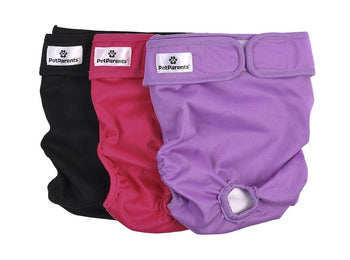Educate to sell: How to help your customers know what they are getting
"Take the fear of a customer knowing too much will reduce their loyalty and throw it out the window. The more you teach them, the more likely it is that they’ll want to come back to you to get their purchasing information."
Companies around the globe are constantly asking themselves: “How do we explain how good our products are? How do we make customers believe in them like we do?”
The good news is that customers want to learn about the products they might take home. Picking up an item without reading the label or asking questions is becoming a thing of the past. Take the fear of a customer knowing too much will reduce their loyalty and throw it out the window.
The more you teach them, the more likely it is that they’ll want to come back to you to get their purchasing information. However, you want to make sure they are getting the right information without making them feel like they are listening to a never ending sales pitch.
Advertising vs Customer Education
Advertising and marketing attempt to persuade on an emotional level and elaborate on features, advantages, and benefits of products. While customer education tries to give the customer all relevant information regarding the products and services.
Take Pet Parents® washable diapers for example. Marketing these to your customers would look something like: “Best in Class! Guaranteed to not leak! Washable and Reusable for a happy environment!” Educating your customers on these would look more like: “Pet Parents® diapers have a sewn in absorbency pad so you don’t have to worry about soiled pads falling out or the added expense of inserts.”
Some customers will want more than a verbal information dump. Have no fear, there are other ways to tackle customer education that won’t cost you much.
Additional Ways to Educate Customers
Create Experiences. Allow your customers to engage with products with all five of their senses. For example, if you sell dog food, have a sample set out where your customer can see it, touch it, smell it, and have their pet sample a piece. Not only will your customers be more apt to buy something they have physically tested, samples, especially those that engage the senses, may increase sales of new products or those that haven’t sold well in the past.
Create and Share Informative Content. Create and share content where customers can have easy access to it. Many times, customers aren’t looking for a user manual but instead want a quick, 200 word or less blurb that says all they need to know. This is where digital media comes into play.
If you haven’t already, consider setting up an newsletter your customers can sign up for. This is an easy way to send out short and sweet information about featured products, new products, or what’s on sale. Your customers will know before they enter the store what to look for and what questions they may have.
Not one for emails? Social media is a great tool too. Draft up a few posts that are easy to read and follow (skip the intense product specification and jargon) that will answer common questions your customers may have. This way they get the information they need between Kardashian tweets or cute dog videos.
When customers are better educated and understand how products will benefit them, it creates a long-term relationship where your customers can look to you knowing you’ll have the answers they need to make an informed decision.

"When customers are better educated and understand how products will benefit them, it creates a long-term relationship where your customers can look to you knowing you’ll have the answers they need to make an informed decision."











